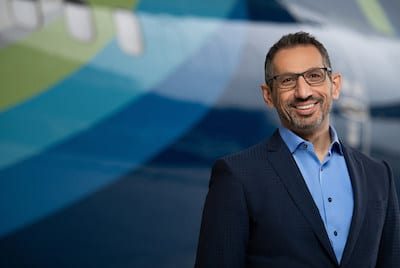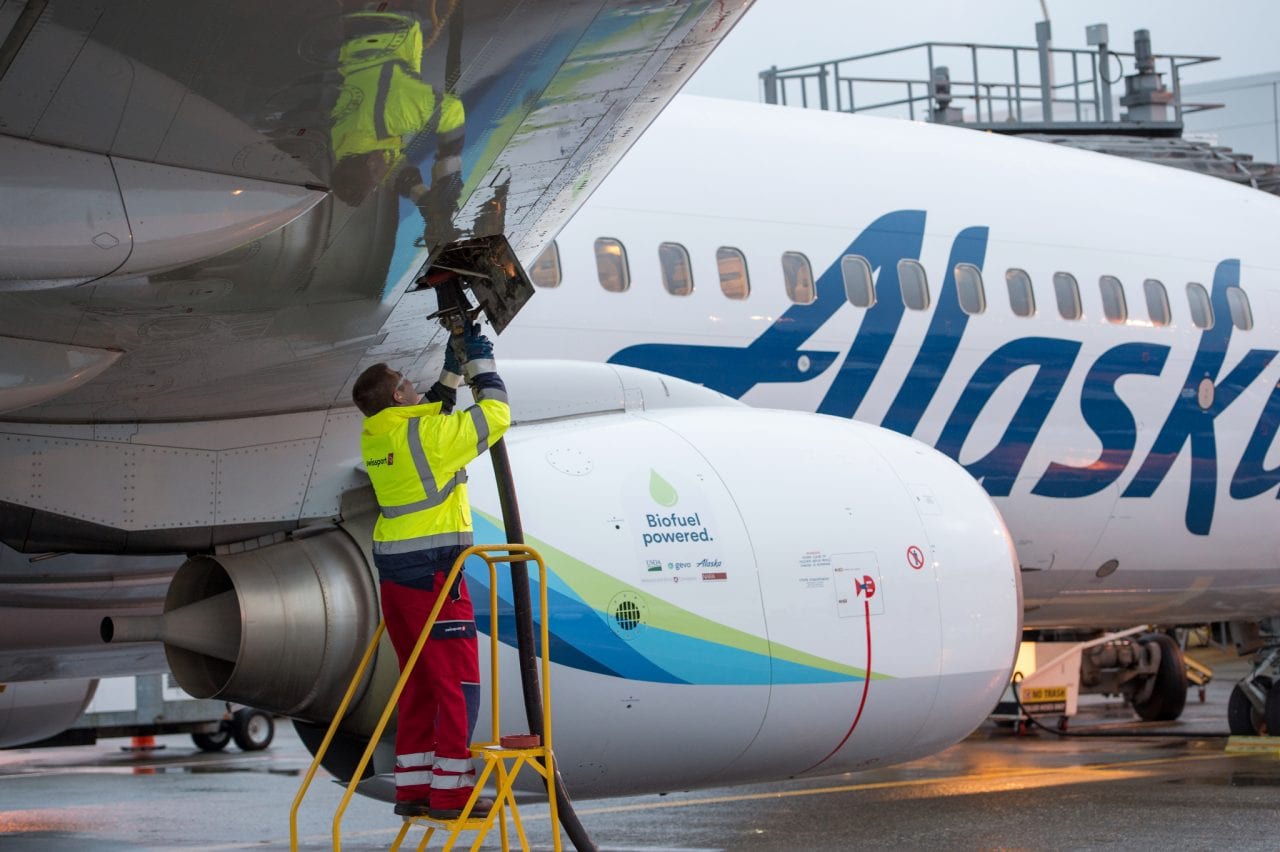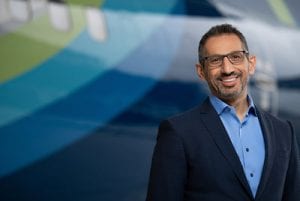Alaska Airlines CEO Says Electric Aircraft Necessary for Future Aviation Sustainability Goals


Alaska Airlines has been participating in various initiatives to develop and test sustainable aviation fuels, such as the November 2016 flight powered by a 20 percent blend of biofuel made from forest residuals pictured here. But the carrier’s new CEO believes electric power is the technology enabler that could help the industry meet ambitious future net-zero emissions goals.
Ben Minicucci, who assumed the position of CEO for Alaska Airlines on March 31, says the northwestern carrier has been studying the capabilities of electric-powered aircraft as a way of helping airlines reduce carbon emissions and achieve several recently announced 2050 climate impact goals by leaders in various segments of the aviation industry.
During the question and answer session of a U.S. Chamber of Commerce 2021 Aviation Summit panel, Minicucci was asked to provide some perspective on the emerging electric vertical takeoff and landing (eVTOL) market. The panel was Minicucci’s first public appearance since taking over for Brad Tilden, who retired after a 30-year career with the fifth-largest U.S. passenger airline.
“We’re looking at it very closely, there are currently a lot of companies working on this technology and I think it’s going to come in more rapidly in the next decade than you think. Probably in the next decade, we’re going to see something, based on the research that we’ve done,” Minicucci said, responding to the audience-submitted eVTOL question.

Ben Minicucci took over as the new CEO of Alaska Airlines on March 31.
The new CEO did not provide major details about any specific eVTOL programs they’re studying, rather focusing on the potential for electric-powered aircraft to help the aviation industry overall reduce carbon emissions generated by flight operations. One day prior to the Aviation Summit, Airline for America (A4A), which counts Alaska, American, Delta, and United among its members, announced the commitment of all 10 of its U.S. air carriers to “work across the aviation industry and with government leaders in a positive partnership to achieve net-zero carbon emissions by 2050,” according to a March 30 press release published by the organization.
A key element of the new A4A commitment includes an ambitious goal of making 2 billion gallons of sustainable aviation fuel available to U.S. aircraft operators by 2030. Minicucci said the SAF goals will help reduce carbon emissions, but a new technological capability is needed o meet the ambitious net-zero 2050 goal.
“If you look at some of the environmental goals everyone is setting on 2050/2040, and short term goals to really help reduce the climate impact, this is going to be an essential piece of that strategy to get to a Net Zero in 2040 or 2050, you cannot do it on sustainable fuels alone, you need technology,” he said, referring to electric-powered aircraft.
The majority of Alaska Airlines’ publicized efforts to enact measures that reduce carbon emissions over the last year have focused on the development of new sources of sustainable aviation fuels. As an example, Netherlands-based SKyNRG is now supplying SAF for Alaska aircraft flying routes most frequented by Microsoft employees according to an Oct. 22 blog post. SkyNRG’s website notes that its SAF is produced from waste oils using Hydrotreated Esters and Fatty Acids (HEFA) technology, a process that refines vegetable oils, waste oils, or fats into SAF.
Alaska’s ongoing partnership with Washington State University to use alternative jet fuel made from forest residuals was highlighted in the November 2020 “Washington Electric Aircraft Feasibility Study” published by the aviation division of the Washington State Department of Transportation.
Kevin Burke, CEO of Airports Council International’s North America division, was also featured on the March 31 panel, advocating for U.S. airports to modernize and prepare for a future to include infrastructure capable of supporting eVTOL operations.
“I’m an optimist, I think we’re in an ever-evolving aviation ecosystem, and that is a great example of it’s not there yet but it will be, and I think we have to be open to the fact that it will be there,” Burke said. “It’s another reason we have to take a look at the places they take off and land at airports, to modernize, and we fully support anything that lands at an airport as long as it’s safe and protects the people there.”
Minicucci’s comments during the Aviation Summit panel follow a string of recent major airlines in different regions committing to investments, partnerships, and development of electric or zero-emissions aircraft programs. British Airways, for example, joined a new investor group backing hydrogen-fueled flights from ZeroAvia, which is managing the development program for a 2MW hydrogen-electric powertrain for full-sized regional aircraft.
On March 25, Finnair signed a letter of interest for the future acquisition of Heart Aerospace’s ES-19 electric aircraft, currently under development in Stockholm, Sweden. In February, United Airlines established a new partnership with eVTOL developer Archer Aviation, which includes the purchase of 200 aircraft once operational.
Minicucci believes such partnerships are key to the advancement of the industry and also gave some thoughts on how electric batteries will eventually be integrated into regional aircraft.
“I think we need to help these technology companies with investment, and research so we can really accelerate, the issue of batteries is very heavy, but I think you’ll see it on little passenger airplanes, whether they be 5-10 at first and then moving into the bigger regional market,” Minicucci said.
The post Alaska Airlines CEO Says Electric Aircraft Necessary for Future Aviation Sustainability Goals appeared first on Aviation Today.
Check FastApn access for commercial satcoms at Fastapn
Flytlink – Avionics, Satcom’s and IFE Consultants






